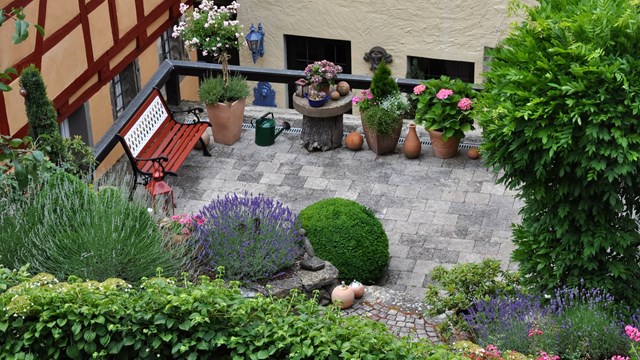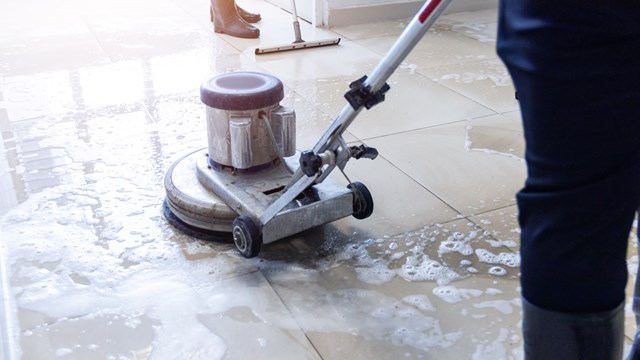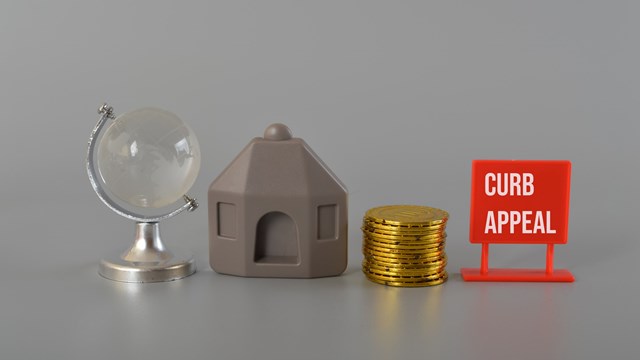Why not cover the roof with plants? It’s such a simple idea; no wonder it’s been around for millennia.
The United States, of course, has developed an architecture that exults in its mastery of Mother Nature. We build bridges across fault-lined inlets and castles in the sand on the seashore and cities in low-lying swamps where hurricanes regularly prey.
It is only in the last decade that the United States has really embraced the so-called green movement—but it is now doing so in the usual American fashion, which is to say with a vengeance.The green roof, not long ago a tree-hugger fantasy, is quickly becoming reality in New England, as it already is in parts of Europe.
The green roof, in its simplest form, consists of a layer of soil or compost that is planted with live vegetation that can take root and thrive in the changing New England climate.
Benefits of a green roof include savings in heating and cooling costs, improved air quality, better storm water management, creation of a beautiful space that owners can enjoy, and reduction of the “heat island” effect that causes cities to broil in the summer.
Diverse Locations
Green roofs are well past the early-adaptor stage. In New England, they have been installed in places as diverse as the World Trade Center in South Boston, the Ikea store in Stoughton, Massachusetts, Boston City Hall, and The Macallen Building, a 210-unit eco-friendly condominium in South Boston.
The green roof in its modern form was developed in the same country that introduced the passive house – Germany. (Don’t let the somber brown-orange-yellow color scheme on the flag fool you; Deutschland is Grünland, arguably the greenest nation on Earth).
“In Germany, green roofs got their first big push,” says Stuart Berg, project specialist with Roofscapes, Inc., a green roof consulting company based in Philadelphia.
This so-called ‘push’ was not exactly fueled by environmental concerns, but rather worry about another kind of green –money.
“It started from a storm water management standpoint,” Berg explains. Runoff from torrential downpours on houses was wreaking havoc on cities and towns, and fixing the problem was becoming prohibitively expensive. “In Germany, homeowners have been paying significant fees for discharge of storm water.”
Some thoughtful horticulturalist suggested that a layer of plants would absorb a great deal of that water, and voilà, a cottage industry was born. Green roofs have since made their way across the pond.
“In the United States, it’s increasing,” says Berg. “In cities, especially in New England and the Northeast Corridor, and in the Midwest. That’s where the climate is the most suitable.”
Intensive & Extensive
There are two main types of green roofs: intensive and extensive.
Intensive green roofs are what the name suggests – intense. They are deep – sometimes as much a three feet of soil – and can therefore sustain just about any kind of plant life.
“They are commonly irrigated,” Berg says. “They are planted with whatever you want – turf grass to trees.” Basically, an intensive green roof is a garden.
Extensive green roofs – less than six inches of soil – are much less expensive but the plant selection is more limited. Varieties of sedums work well in extensivegreen roofs around New England.
All plants on New England green roofs have to be unusually hardy, says Alfredo DiMauro, assistant vice president of Worcester Polytechnic Institute, which just completed a 234-room student dormitory topped by a green roof. “They have to be species that are both drought resistant, becausethere could be long intense periods in the summer where there’s no rain as well as the spring and the fall, and though the winter where we’re getting a deluge. So they have to be tolerant to those extremes.”
Plants used on the Worcester, Massa-chusetts dormitory include four sedumspecies, chives, and hens and chicks, says DiMauro.
There are many advantages to having a green roof, some more obvious than others. As we know, the plants on a green roof retain storm water –the problem that sparked the green roof revolution in Germany. But there are many more.
The public benefits of a green roof involve giving back to the community, while reducing the NIMBYism that often surrounds condo projects, says Stephen Peck, president of Toronto-based Greenroofs for Healthy Cities. “If you paid a million dollars for a condo and someone wants to develop a parking garage right next to you, you wouldn’t be very happy. But if they put a green roof on it and made it accessible and beautiful, that might change your idea.
“Whether it’s the view, or gardening, or creating a beautiful private or semi-privatespace with a view, in the city that’s a real value.”
At the Macallen Building, its terraced green roofs are pleasant to look at while increasing the trendiness of the up-and-comingSouth Boston neighborhood.
In addition to the public benefits, there are also a number of perks that are enjoyed by the individual buildings.
Longer Replacement Cycles
A green roof, unlike a regular one, does not need to be replaced every 15 to 20 years. “Green roofs last longer because they protect the waterproofingunderneath, so you can offset one or two cycles of replacement cost,” says Peck, who notes that condos considering adding green roofs should first have an engineer check their roof’s load-carrying capacity. “That’s when you want to do a structural evaluation and determine if a green roof works for your particular building.”
Condos adding a green roof that will be newly open to residents also need to check with their insurance company about personal injury hazards, says Peck. “If your roof was not accessible, and you put a green roof on and make it accessible, that may have some additional insurance requirements,” he says.
Condos, however, will not have to worry about obtaining additional insurance coverage for leaks, as “properly designed, installed and maintained green roofs will result in fewer leaks over the course of their life span,” says Peck.
The return on investment (ROI) for green roofs can be spread over a long period of time, but then, it generally behooves a condominium to think long-term, anywhere from 15 to 30 years.
How much will a green roof save your condominium? It depends on a number of factors: shape and height of the building, level of insulation, and itsexisting heating and cooling systems.
To answer such questions, Greenroofs for Healthy Cities has a “Green Save Calculator” on its website, GreenRoofs.org, which allows condominiums to enter their roof dimensions and compare return on investments for green roofs versus other types of roofs, says Peck.
The Macallen Building’s green roof, in conjunction with other energy saving materials in the condo, results in a 30 percent decrease in electric bills for individual owners. In addition, over 600,000 gallons of water are saved eachyear through the use of dual-flush toilets and an innovative irrigation system that uses rainwater collected from the roof.
To further the understanding of getting maximum value from green roofs, Peck says his non-profit is launching a new designation, “Green Roof Professional,” for architects, landscape engineers, roofing consultants and horticulturalists.
The new designation, says Peck, willprovide a much-needed benchmark for the rapidly-maturing green roof industry.
Whether cared for by a Green Roof Professional or a casual gardener, a green roof can be very easy to maintain, labor-wise. Berg estimates that a typical green roof requires four hours of work per one thousand square feet per year. And most of that is weeding. Also, a roof that is already sealed – a description that hopefully includes your roof –requires little more than a thin layer of felt-like material underneath the soil.
Green is the color of the future. It might also be the color of your roof – sooner than you might think.
Greg Olear is a freelance writer and frequent contributor to New England Condominium.
Jim Douglass contributed to this report.






Leave a Comment